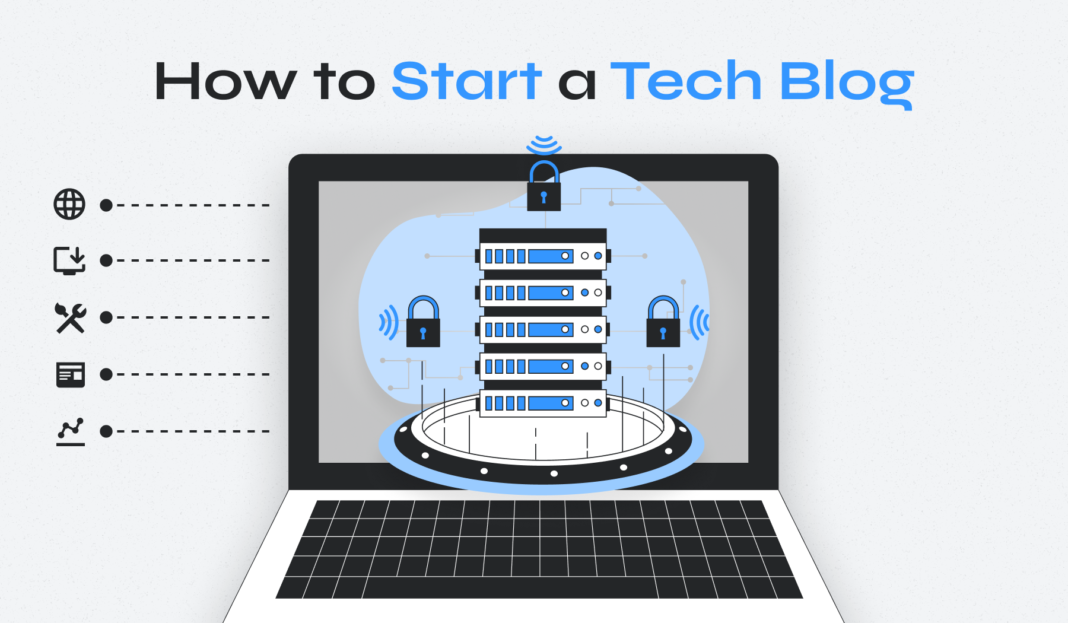The Ultimate Guide to Starting a Tech Blog
Starting a tech blog can be an exciting and rewarding endeavor, but it requires a clear strategy and the right tools. In this comprehensive guide, we walk you through everything you need to know about launching and growing a successful tech blog. From selecting a niche within the tech industry, setting up your blog with the best platforms and hosting options, to creating valuable content that attracts readers and boosts SEO, we’ve got you covered. Learn how to monetize your blog through affiliate marketing, ads, and sponsored content, as well as how to engage with your audience and build a community. Whether you’re a tech enthusiast, expert, or aspiring influencer, this guide will help you turn your passion for technology into a thriving online business.

1. Title and Introduction
Example Title Ideas:
- “The Ultimate Guide to Starting a Successful Tech Blog in [Year]”
- “How to Launch Your Tech Blog: Step-by-Step Guide for Beginners”
Introduction:
Hook your readers with a compelling reason to start a tech blog. For example:
“Are you passionate about technology and ready to share your insights with the world? Whether you’re a gadget guru, a coding enthusiast, or a tech entrepreneur, launching a tech blog can establish your voice in the industry, build a community, and even generate income. In this ultimate guide, we’ll take you from idea to publication and beyond.”
2. Choose Your Niche
Tech is a broad topic, so narrowing down your focus will help you stand out.
Identify Your Passion and Expertise:
- Do you love reviewing gadgets?
- Are you an expert in AI, blockchain, or web development?
- Can you simplify complex tech concepts for beginners?
Popular Tech Blog Niches:
- Gadget Reviews: Cover smartphones, laptops, and other gadgets.
- Tech Tutorials: Write step-by-step guides on coding, software, or hardware.
- Industry News: Provide analysis on tech trends and innovations.
- Opinion Pieces: Discuss ethics, policies, or the societal impact of tech.
Pro Tip: Choose a niche that aligns with your knowledge and interests to ensure consistency.
3. Set Up Your Blog
Pick a Domain Name:
- Make it short, memorable, and relevant to tech.
- Example: TechTalk, CodeCrave, GadgetGuru.
Choose a Blogging Platform:
- WordPress.org: Best for customization and scalability.
- Blogger: Simple, free, and beginner-friendly.
- Medium: Ideal for writing-focused blogs without technical setup.
Select Web Hosting:
- Use reliable hosting services like Bluehost, SiteGround, or Hostinger.
Customize Your Blog Design:
- Pick a clean, tech-oriented theme.
- Ensure your design is mobile-friendly.
- Add easy navigation menus for categories like Reviews, Tutorials, or News.
4. Create Engaging Content
The success of a tech blog relies on high-quality, valuable content.
Content Ideas:
- How-To Guides:
- Example: “How to Build a Custom Gaming PC in [Year]”
- Reviews:
- Example: “Top 5 Smartphones Under $500: Comprehensive Comparison”
- Tech News Analysis:
- Example: “What the Latest AI Breakthrough Means for Developers”
- Opinion Pieces:
- Example: “Is Blockchain the Future of Secure Transactions?”
Follow a Consistent Content Structure:
- Headline: Make it catchy and clear.
- Intro: State the problem and why your post matters.
- Body: Use subheadings, bullet points, and examples.
- Conclusion: Summarize key points and add a call to action.
5. Optimize for SEO (Search Engine Optimization)
SEO will help your blog rank higher on search engines and attract more readers.
Keyword Research:
- Use tools like Google Keyword Planner or Ubersuggest to find trending topics.
- Focus on long-tail keywords like “Best gaming laptops under $1000”.
On-Page SEO Tips:
- Include keywords in your title, meta description, and headings.
- Add internal and external links to credible sources.
- Optimize images with alt text and compress them for faster loading.
Technical SEO Tips:
- Use plugins like Yoast SEO (if on WordPress) to improve your site’s SEO.
- Ensure your blog loads quickly and is mobile-friendly.
6. Promote Your Blog
Getting traffic is as important as creating content.
Social Media Marketing:
- Share your posts on platforms like Twitter, LinkedIn, and Instagram.
- Join tech-focused groups or forums like Reddit’s r/technology.
Networking with Other Bloggers:
- Comment on other tech blogs and link back to your content.
- Collaborate with fellow bloggers for guest posts or link exchanges.
Email Marketing:
- Create a mailing list with tools like Mailchimp.
- Offer a freebie (e.g., “Tech Starter Guide”) to encourage sign-ups.
Use Analytics to Grow:
- Install Google Analytics to track which posts perform best.
- Adjust your content strategy based on audience behavior.
7. Monetize Your Tech Blog
Once you have traffic, consider these methods to earn from your blog:
Affiliate Marketing:
- Partner with programs like Amazon Associates or tech brands to earn commissions on product recommendations.
Sponsored Content:
- Collaborate with companies to write paid reviews or promotional posts.
Google AdSense:
- Display ads on your blog and earn based on views or clicks.
Sell Digital Products:
- Create and sell e-books, courses, or software tools related to tech.
Pro Tip: Balance monetization with value. Readers should trust your recommendations.
8. Stay Consistent and Evolve
Consistency is Key:
- Post regularly, whether it’s once a week or bi-weekly.
- Set up an editorial calendar to plan your content in advance.
Engage with Your Audience:
- Respond to comments and emails promptly.
- Encourage discussions by asking readers for their opinions.
Adapt to Trends:
- Stay updated on emerging tech topics like AI, quantum computing, or Web3.
- Experiment with new content formats, like videos or podcasts.
9. Conclusion and Call-to-Action
End your guide with an inspiring note:
“Starting a tech blog is a journey of passion, learning, and creativity. By following these steps and staying committed, you can carve out your unique space in the tech world. Ready to begin? Start writing your first post today!”
Encourage readers to share their ideas or challenges in the comments:
“Already running a tech blog or thinking about starting one? Share your thoughts, and let’s grow together!”
10. Bonus Ideas to Enhance the Guide
- Visual Infographics:
- Display the blogging process or monetization strategies in a visual format.
- Tech Tools for Bloggers:
- List essential tools like Grammarly (writing), Canva (design), and Hootsuite (social media management).
- Checklist for Beginners:
- A downloadable PDF checklist to get started.




